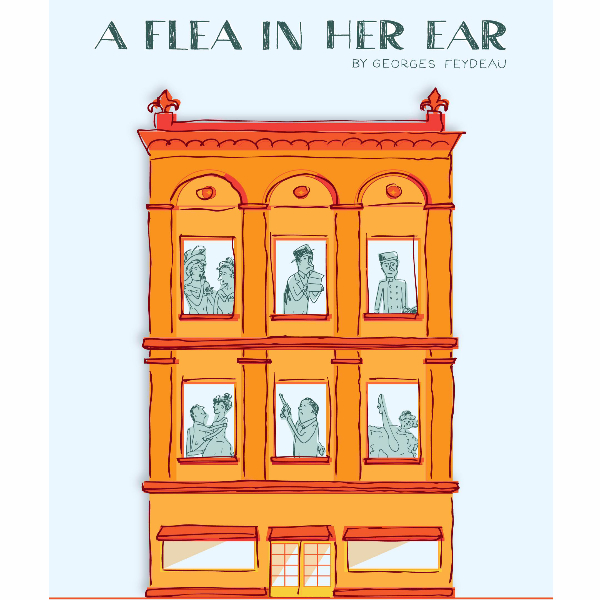
Overview
Synopsis
This farcical French play is set in France at the turn of the 20th Century. Raymonde Chandebise suspects that her husband, Victor Emmanuel Chandebise, is having an affair after he suddenly becomes sexually inactive and seemingly uninterested in her (which in fact is due to a nervous condition). She confides in her best friend, Lucienne, who comes up with a plan to test him. They write a letter, in Lucienne’s handwriting, from a secret admirer that tells Victor Emmanuel to meet her that night at the Hotel Coq d’Or, a hotel that married men are known to frequent for their extramarital affairs. Raymonde and Lucienne leave the letter for her husband to find and go to the Hotel to confront Victor as soon as he arrives. Their plan is foiled when Victor receives the letter and assumes that it must be for his handsome bachelor friend, Tournel. Tournel, who is secretly in love with Raymonde, thinks the letter must be from her, and hurries to the Hotel Coq d’Or to keep the appointment. Along with Raymonde, Lucienne, and Tournel, other guests of the Chandebise household end up at the Hotel that night: Camille, Victor’s nephew, is there to celebrate curing his speech impediment, and he is joined by Antoinette, the cook; Etienne, Antoinette’s jealous husband, goes to the hotel to chase after his wife; Dr. Finache shows up for an afternoon rendezvous; Carlos Homenides de Histangua, Lucienne’s husband, sees the letter, recognizes his wife’s handwriting, and goes to the Hotel Coq d’Or to kill her, and Victor Emmanuel follows to stop the murder. As if the surge of guests were not enough to create chaos at Hotel Coq d’or, the hotel’s drunken porter, Poche, resembles Victor Emmanuel, adding to the cases of mistaken identity. The whole night becomes a ruckus disaster, complete with gun shots and revolving doors, and it is a miracle when, in the end, Raymonde and Victor Emmanuel reconcile and order is restored.
Show Information
Context
Plot
Characters
| Name | Part Size | Gender | Vocal Part |
|---|---|---|---|
|
Lead |
Male |
Spoken |
|
|
Lead |
Female |
Spoken |
|
|
Lead |
Male |
Spoken |
|
|
Lead |
Female |
Spoken |
|
|
Lead |
Male |
Spoken |
|
|
Lead |
Female |
Spoken |
|
|
Supporting |
Male |
Spoken |
|
|
Supporting |
Male |
Spoken |
|
|
Supporting |
Female |
Spoken |
|
|
Supporting |
Male |
Spoken |
|
|
Supporting |
Male |
Spoken |
|
|
Supporting |
Male |
Spoken |
|
|
Featured |
Female |
Spoken |
|
|
Featured |
Male |
Spoken |
|
|
Featured |
Male |
Spoken |
Songs
A song with an asterisk (*) before the title indicates a dance number; a character listed in a song with an asterisk (*) by the character's name indicates that the character exclusively serves as a dancer in this song, which is sung by other characters.
Monologues
Scenes
Key Terms
Sorry! We do not currently have terms for this guide.
Videos
Quizzes
Sorry! We do not currently have quizzes for this guide.
Themes, Symbols & Motifs
Sorry! We do not currently have learning modules for this guide.
Quote Analysis
Sorry! We do not currently have learning modules for this guide.